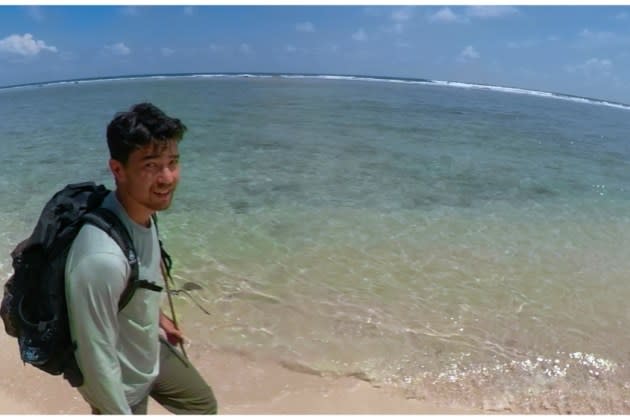Nat Geo’s Chris Albert on How to Mount a Successful Campaign for Documentaries: ‘Marketing Can’t Make a Bad Movie Good’
- Oops!Something went wrong.Please try again later.

At documentary festival IDFA this week, National Geographic’s exec VP of marketing and communications Chris Albert – whose slate includes IDFA entry “The Mission,” about the death of American evangelical missionary John Chau on the remote Indian island of North Sentinel – was asked during an onstage interview with the festival’s artistic director Orwa Nyrabia: “How would you market a film with a budget of $20,000?”
The executive, who has worked at National Geographic for over 20 years, was quick to respond: “Whether you’ve got $20,000 or $2 million, marketing can’t make a bad movie good. You can throw as much money as you want into a bad movie and it’s not going to make it better.”
More from Variety
Albert said he could spend his entire marketing budget for a low-budget film by placing it on the viewing portal for Oscar voters, but that is not the way he would proceed. “I’d do two key things: I’d spend about $1,500 on a very rudimentary website where the film could live so when I meet people I can send them on their way to watch it. A website with simple press notes, filmmaker bio and the film. You can do that very inexpensively.”
“I would spend the entire rest of the budget on travel, going to festivals, meeting people, finding your advocates and the people who love your film so they can then start going out telling their network. Because if you get the right people to see it, you will achieve success.”
Before facing the budgeting exercise, Albert delivered an overview of two of his most recent marketing campaigns: Sara Dosa’s “Fire of Love” and Alex Pritz’s “The Territory.”
“I’ve probably worked on 100 films about volcanoes, but there was only one ‘Fire of Love,’” said Albert of the Oscar-nominated film. Focusing on the film’s scientific hook, Albert and his team partnered with over 100 schools, STEM organizations and environmental clubs to host screenings. The romance aspect of Dosa’s film lent itself to special Valentine’s Day showings across IMAX theaters in the U.S.
“Fire of Love” was such a strong showcase that National Geographic Documentary Films announced last October it signed a first-look production deal with Dosa and the film’s producer Shane Boris (“Navalny”). The duo’s newly formed Signpost Pictures is already developing the first two titles of the deal, “On Time and Water,” based on the eponymous book about a couple dedicated to mapping Iceland’s glaciers, and “Untitled Mexican Earthquake Project,” investigating earthquakes in Mexico and the “geological, social and political history unearthed by ‘natural’ disasters.”
As for “The Territory,” the executive emphasized the film was acquired by Nat Geo out of 2022’s Sundance Film Festival with a “well-funded, robust impact campaign attached.” The marketing team’s job, according to Albert, was to steer the campaign toward its original goals of amplifying Indigenous voices and protecting Indigenous territory.
“The film just won the Impact Award at the Jackson Hole Film Festival and this was our Oscar for this film because having the film out in the world and creating such an impact really means the world to us,” he said.
When discussing general campaigning strategy, Albert referred to the label’s ethos and how they are swimming against the tide by focusing energy on feature documentaries instead of episodic formats. “For us, documentary storytelling is incredibly important, but what you won’t see is us having 10 feature docs at the same time. We want to give each of our films all of our attention and can’t do that if we have 10 or 12 films. You’re going to see three or four films a year from us so, from a marketing perspective, we can be all in.”
Albert commented on the industry’s perception of how costly their marketing campaigns are. “People would be surprised if I actually told them the number. We give 100% of our attention [to our films] across all mediums. We are also great about using our own platforms to support these films. National Geographic is the largest brand on social media — we are one spot ahead of Taylor Swift on Instagram, which we take great pride in.”
As for what makes a Nat Geo film, Albert says the acquisitions team usually works from the “gut,” looking for films with strong storytelling and international potential. “We don’t want things to just work in the U.S. Our films will eventually live on Disney+ around the world, so we want them to find an audience globally.” Once the film finds a home in the company, the marketing team addresses questions such as the length of the theatrical window and awards potential. At the end of the day, Albert says, “I feel like we know our brand pretty well and know what’s going to work with our audiences.”
Best of Variety
Sign up for Variety’s Newsletter. For the latest news, follow us on Facebook, Twitter, and Instagram.
